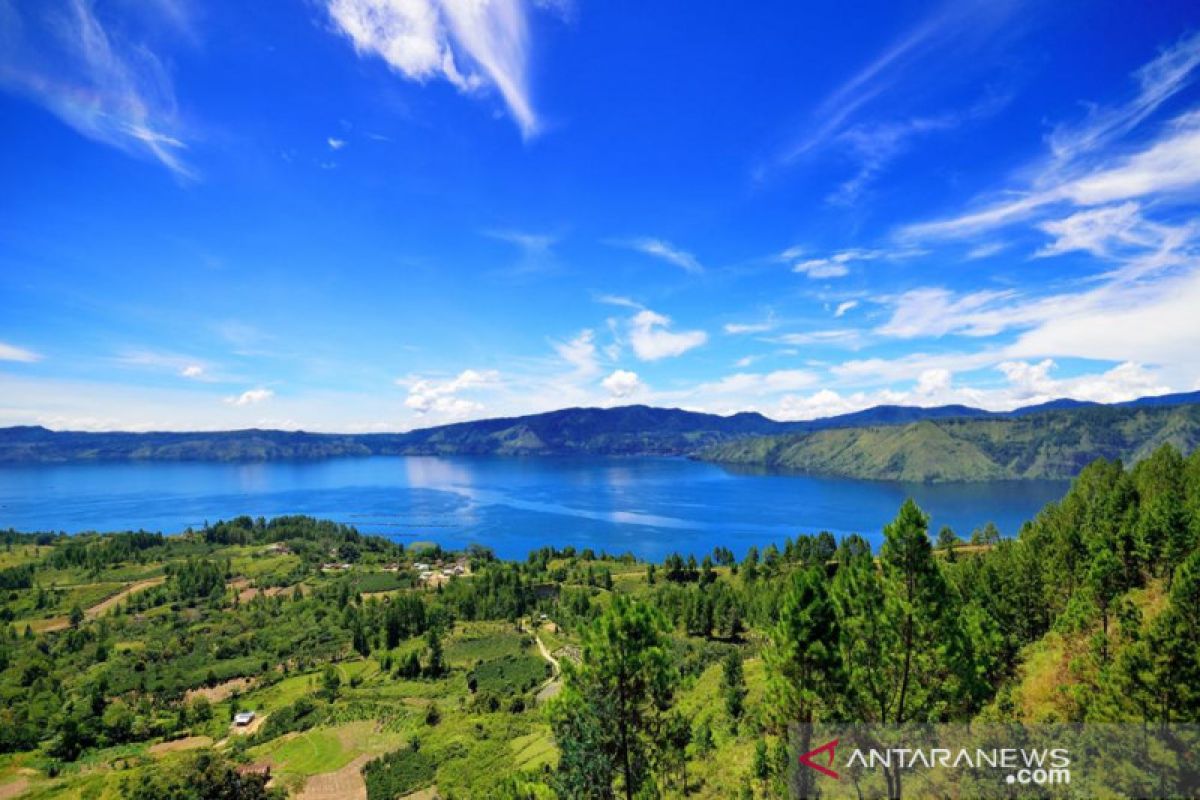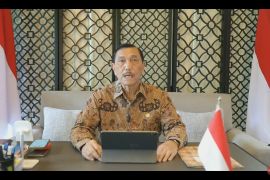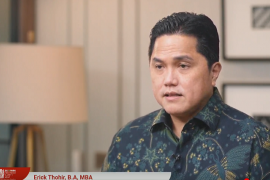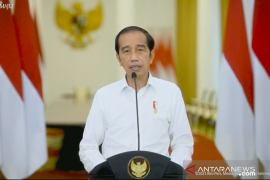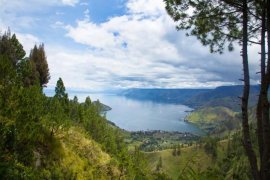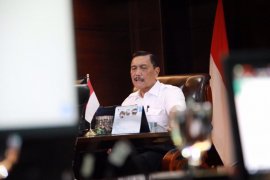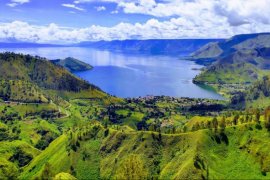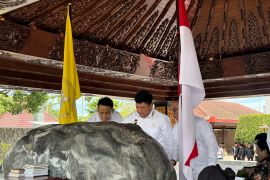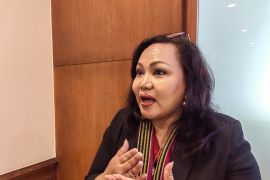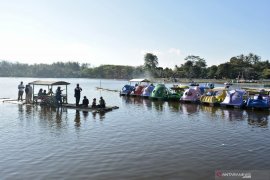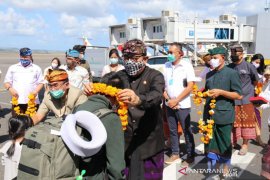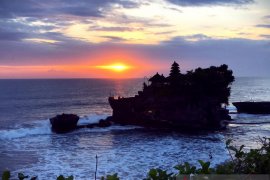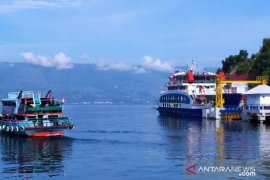This is because a geopark has meaning and functions beyond a geological park. It serves as a link between the geological heritage and all other aspects of an area’s natural and cultural heritage. It aims to reconnect human society with the planet and celebrate how the Earth, and its 4,600-million-year-long history, has shaped every aspect of people's lives and societies.
The presence of geoparks helps preserve nature and culture and improve the economy as well as contribute to the prosperity of local communities.
Indonesia sees huge potential in developing cooperation between nations having geoparks in order to support nature and cultural conservation efforts, develop the creative economy, and promote the tourism industry.
No less than 110 Indonesian regions can potentially be developed into geoparks, officials have said. Currently, Indonesia has at least 15 national geoparks, including 6 that have been included on the UNESCO Global Geoparks (UGGp) list.
The six geoparks are Batur in Bali, Ciletuh-Pelabuhanratu in West Java, Gunung Sewu in Yogyakarta, Rinjani in West Nusa Tenggara (NTB), Toba Calderas in North Sumatra, and Belitong in Bangka Belitung Province, Sumatra Island.
Speaking at a virtual conference on Indonesia's national geoparks on November 22, 2021, President Joko Widodo reminded all stakeholders and the public to protect the country’s geoparks, and prevent them from getting damaged and overexploited.
A geopark is a place to learn and preserve the wealth and biodiversity of Indonesia, according to Widodo.
"Please protect our geological wealth by preserving the geological heritage and the values in it, such as the archaeological, ecological, historical, and cultural values, so that they can continue to be passed on to the future generations," he said.
Geoparks might fit in with a tourism trend that has emerged during the pandemic, which is prioritizing ecotourism and wellness tourism, he added.
He called for a good management system for geoparks that balances nature conservation and economic interests. The formulation of the management system must involve environmental activists, academics, and local communities, he said.
Also speaking at the conference, State-Owned Enterprises (SOEs) Minister Erick Thohir opined that the development of geoparks into tourist destinations will have a multiplier effect on the community.
It would not only create investment opportunities, but also open new jobs in the creative economy sector, which could improve the people's economy and welfare, he elaborated.
Geopark development is being carried out in accordance with the principles of the Sustainable Development Goals (SDGs), he pointed out. Hence, it is not only focusing on the economic aspect, but also the cultural and environmental aspects by paying attention to local wisdom to ensure that the areas are not overexploited, he added.
Meanwhile, Coordinating Minister for Maritime and Investment Affairs Luhut Binsar Pandjaitan highlighted the importance of collaboration among stakeholders to develop national geoparks as tourism destinations.
Speaking at the same conference, Pandjaitan said geoparks have the potential to attract more domestic and international tourists.
"We need to support the geopark concept as defined by Presidential Regulation No. 9 of 2019, and we must also enhance multi-stakeholder management by observing the three pillars of geopark development: conservation, education, and the livelihood of local communities," he added.
Indonesia is the country with the most geoparks on the UNESCO Global Geoparks (UGGps) list in Southeast Asia and is eighth out of the only 44 countries with geoparks included on the UGGp list, Pandjaitan noted.
Indonesia is currently making preparations to propose including 12 more geoparks to the UGGp list to UNESCO.
The ambition has been outlined in the 2020-2024 national middle-term development plan.
The 12 geoparks include Ijen in Banyuwangi, Maros-Pangkep in South, Raja Ampat in West Papua, Meratos in South Kalimantan, and Merangin in Jambi.
The National Committee of Indonesian Geoparks (KNGI), which was established in 2018, has been making preparations by involving the local people, particularly young people, to raise awareness about the preservation of geoparks and deriving economic benefits from them.
The readiness of local people is crucial for the development of a geopark, the Meratus Geopark Development Office’s head, Nurul Fajar Desira, said in Banjarbaru, South Kalimantan, on November 9, 2021.
"The main goal of the geopark is to conserve the Meratus Mountains (environment) and explore the economic value for local people through its natural as well as cultural wealth," Desira said.
A Dangsanak Geopark Meratus has been formed as a volunteer group, with its members comprising environmental activists, students, academicians, businesspersons, media workers, and local figures who harbor a common concern about the preservation of the environment in South Kalimantan, he said.
The group is expected to become a partner for the office in developing the geopark, he informed.
The South Kalimantan government has submitted a proposal for the grant of UGGp status for the Meratus Geopark. The UN body will conduct an evaluation in the matter in 2022.
The Meratus Mountains, which gained the national geopark tag in 2018, have 74 potential geosites located in nine districts and cities, including Tabalong, Balangan, Central and South Hulu Sungai, Tapin, Banjar, and Kotabaru, Desira noted.
South Kalimantan has made several efforts to achieve UGGp status by improving public facilities at the geosites and raising awareness in schools and communities, among others, he said.
It is important for local people to have sound knowledge of the geological conditions in their respective regions so that they can become involved in the management of the geosites, he said, adding that the 200-million-year-old Meratus Mountains have a complex geological history.
Hence, the Meratus Geopark will be included in school curriculums, from elementary to the senior high school level, he said.
Chief of the Dangsanak Geopark Meratus, M. Farid Soufian, expressed the group's readiness to support the Meratus Geopark's bid to gain UGGp status.
"Our concern is preservation of the environment at the Meratus Geopark," he said.
The group is ready to train local people in tourism management, he added.
Meanwhile, the Jambi provincial government is also preparing to conduct a study on the Merangin Geopark to support the bid for its inclusion on the UGGp list.
"We need to prepare thorough studies regarding the history, culture, art, social, economy, and local wisdom in managing the Merangin Geopark," Jambi Governor Al Haris said recently.
Merangin Geopark has historical value as the oldest fossils and Earth fragments in the world can be found there, he noted.
It is also home to a variety of endangered species as it is a part of the Sumatran tropical rainforest, he added.
Related news: Geoparks development would have multiplier effect: SOEs Minister
Related news: UNESCO tag for Toba Caldera to boost N Sumatra tourism
Related news: Indonesia seeks inscription of more geoparks on UGGp List
Editor: Rahmad Nasution
Copyright © ANTARA 2021
